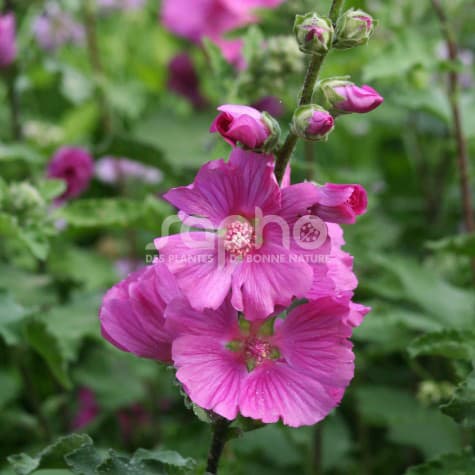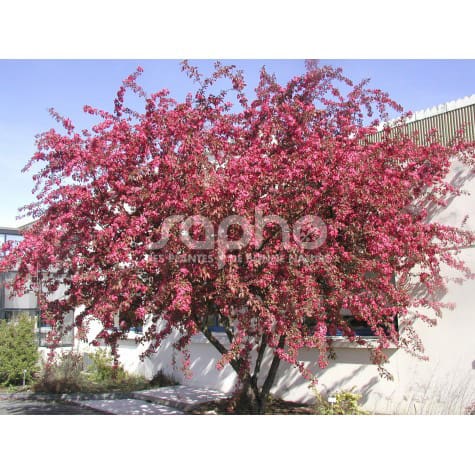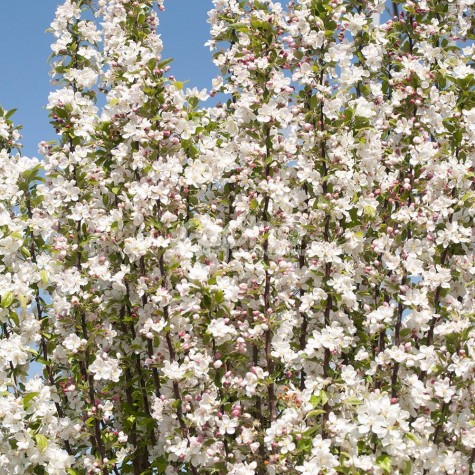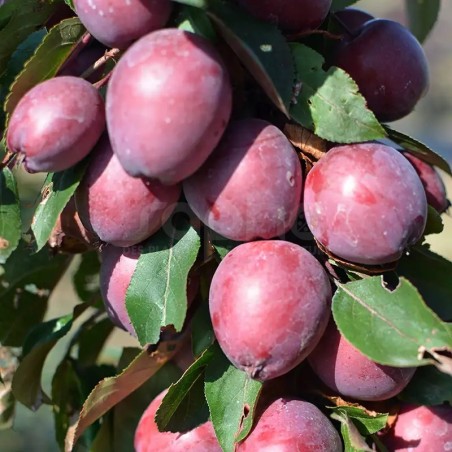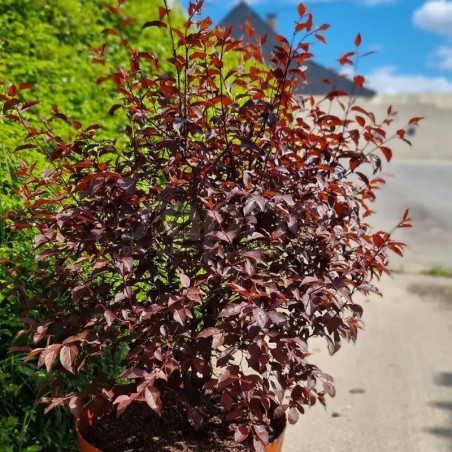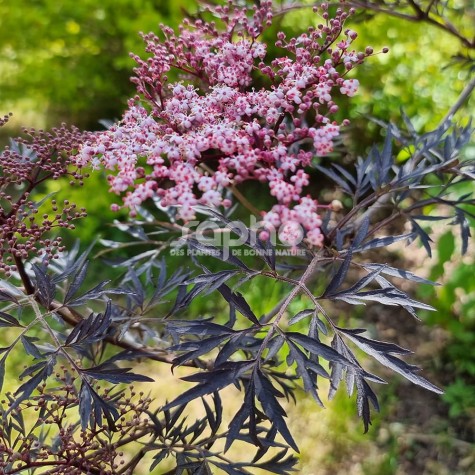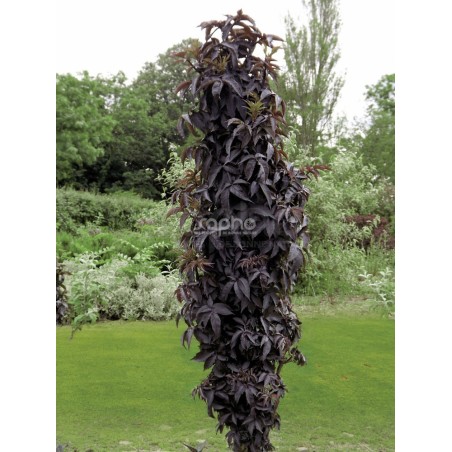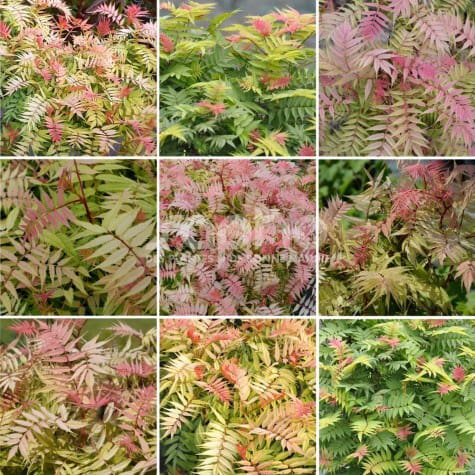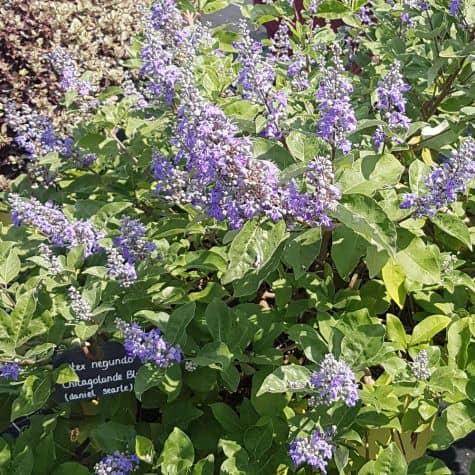A bright lavatera for the beginning of summer.Deriving from the Lavatera olbia 'Rosea', CHAMALLOW® shows a certain orginality compared to the classic varieties of Lavatera. This selection has a particularly compact, bushy and rounded growth. Its light green, slightly velvety foliage stays healthy. These qualities make it interesting for growing in containers.In July - August, the straight branches have deep pink flowers. They are of medium size with even darker pink stripes.To be planted in flowering hedges or in beds, together with shrubs and perennials.
Filter By
Foliage
Position
Where to find Sapho plants ?
For young plants
You will find the names of Sapho-licensed nurserymen at the bottom of each variety sheet.
For available plants
Please ask your nursery suppliers.
Each licensed propagator is free to market his young plants to all his customers.
Categories
Menu
Trees and shrubs
An ornamental apple tree for the town or the country.This tree is of semi-spreading shape, reaching a height of 3 to 4meters in ten years and has a harmonious form, which it keeps without the necessity of pruning. Its leaves and branches are purple.The violet-pink flowers blossom in April - May along the whole length of the branches, and the purple fruits appear in autumn.COCCINELLA® has also been chosen by the INRAE selectors for its resistance to the major diseases such as fire blight, scab and mildew.Grown to a full standard, COCCINELLA® has the asset of a small town tree; grown in clumps, its foliage and fruit are appreciated in mixed countryside hedges or in shrub borders.
Naturally a STAR since its creation.
This tree is of semi-spreading growth, reaching a height of 3 to 4m in ten years and has a harmonious shape, which it keeps without the necessity of pruning. Its foliage is green.
In April, 'Evereste' covers itself in bright pink flower buds, which bloom as pure white bouquets of flowers. The quality and the abundance of its pollen make it an ideal pollinator, precious for fruit growers (in proportion of 6 - 8% of all varieties of early or semi-early flowering).
The cherry sized fruits are orange with thin red stripes. They apprear in autumn and have the particularity to last well into winter.
'Evereste' has also been chosen by the INRAE selectors for its resistance to the major diseases such as fire blight, scab and mildew.
Nearly a million plants have been sold in Europe since its creation in 1974.
Its ornamental qualities, its reasonable dimensions and its easy care make it an excellent small urban tree if grown full standard; in clumps it is very valuable in the composition of flowering hedges and in shrub borders.
A landmark in the garden!
A columnar habit when young, evolving into a pyramidal form
Young, purple foliage that turns dark green
Spectacular intense red flowering in bud, evolving to carmine pink
Numerous plum-sized, purplish-red fruits with red flesh persist until late autumn
Its initial columnar shape evolves into a pyramid shape with age, making it ideal for small spaces
A chocolate-red Prunus for small spaces
A compact, branching habit from a young age
An attractive dark chocolate-red foliage that turns black-red in summer
Creamy white spring flowers that contrast with the foliage
Very hardy and only half the size of the 'Nigra' variety, making it ideal for small spaces and container growing
Purple and lacinated, a very decorative elder
This elder is very elegant thanks to its big, deep purple, nearly black, finely dissected leaves. The young shoots are green. The shrub tolerates half shade, but planting it in full sun, emphasizes the beautiful colour of the foliage. Its growth is medium.In June, BLACK LACE is covered in flat, pink buds, getting paler at the opening stage to become a creamy white. The contrast to the dark foliage is remarkable.At the end of summer, the dark purple then black berries are appreciated by the birds.Its purple and lacinated foliage, its abundant flowers and berries make it an decor for the garden. BLACK LACE should be planted individually or in free growing shrub-hedges, together with evergreens, for example.
Dark purple elder with an upright and thick shape.BLACK TOWER has an interesting upright and naturally thick shape.Its young shoots are green. Then the large-sized foliage becomes deep purple brown, covering the plant from the base upwards.In June - July, from a very young age, nearly at every node, numerous quite small pink and white flowers open, contrasting with the foliage. Black fruit appear in the autumn.
A novelty for the Sorbaria genus : foliage with long lasting colours, a growth that stays compact
Concerning the Sorbaria species, where novelties are rare, PINK HOPI® 'COUSORB05' has been chosen for its qualities, different from those of 'Sem'.The compound, serrated foliage is delicate, light and harmoniously layered. It is a remarkable plant, due to its young variegated shoots which are red, pink and cream, then veined with white. Bud burst is extremely precocious, starting in early March. The shoots withstand the cold (at least up to -3° C). The colourful period lasts a month longer than in the traditional varieties, the shrub shines until the end of Mai. Later, in the summer, the foliage turns green.The shape of PINK HOPI® has the additional advantage of staying compact and this selection produces less suckers. Its dense foliage makes it a good ground cover.The white flower panicles bloom in June - July.The shrub does not need any maintenance (neither treating nor pruning). It is very hardy.
A tropical touch in the garden!
Large tubular flowers in bright yellow and orange on the outside
Very long flowering period from May to October
Trumpet-shaped flower, more open and decorative than the type
Sarmentous shrub with dissected foliage
Ideal for terraces and balconies, must be overwintered. Can be planted in open ground only in mild climat
A new hybrid chaste tree, created at the Chicago Botanical Garden, very resistant to cold
This very unusual shrub (wide and compact) has satin-finish foliage with a mix of round, simple and three-pinnate leaves.
Its long, dark-blue flowers are borne on darker stems. They are highly melliferous, attracting pollinators to your garden.
It is particularly resistant to pests, cold and drought, making it ideal for small gardens in sunny locations.

